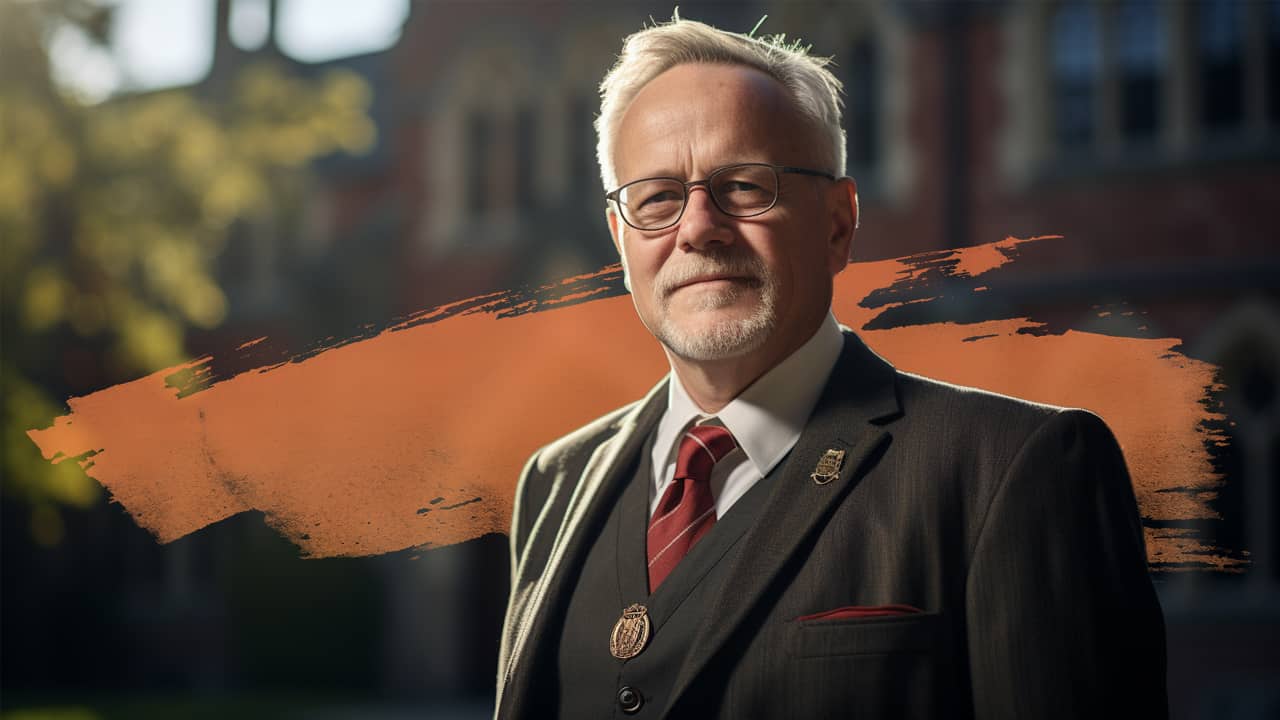Understanding the Importance of a University President Search
A university president or chancellor search is a critical process that carries some of the farthest-reaching implications for the future of an educational institution. The selection and appointment of the president shape the university’s strategic direction and operational realities for years to come, regardless of how many years they serve in the role. It is a decision that requires careful consideration, extensive planning, and the involvement of a large network of key stakeholders.
The importance of such a president search lies in the fact that the president or chancellor serves as the institution’s president and CEO and is responsible for leading, managing, and advancing its mission and goals. A university president must naturally possess strong leadership qualities, a deep understanding of academia, and the ability to navigate the complex landscape and politics of higher education and related public and private sector partnerships. The president’s vision and strategies will guide the university’s trajectory, influencing everything from academic programs and research initiatives to student engagement and community partnerships. Therefore, it is crucial to undertake a more robust, thorough, and thoughtful search process to identify the ideal leader capable of bridging academic vision with the unique operational realities of the institution in question to lead the institution to greater heights.
Defining Academic Vision and Operational Realities in Higher Education
Defining academic vision and operational realities in higher education is essential for the success and growth of any institution if there is any hope of making any measurable impact. Academic vision refers to the long-term goals and aspirations of the university, encompassing its mission, values, and strategic objectives. It guides the development of academic programs, research initiatives, and community engagement efforts, ensuring that the institution remains at the forefront of educational innovation and excellence.
Operational realities, on the other hand, pertain to the practical aspects of running an organization of any size. This includes the administrative, operational, financial, and logistical aspects that necessarily underpin the realization of the academic vision. It involves effective resource management, strong managerial leadership, and adapting to ever-changing external factors such as economic conditions, technological advancements, demographic shifts, and societal needs. The alignment, or overlap, between academic vision and operational realities is crucial to ensure that the institution not only sets appropriately ambitious goals but also has the necessary infrastructure, resources, and mechanisms in place to achieve them. By clearly defining and understanding these intertwined aspects, universities can establish a clear and cohesive strategic direction, fostering an environment that facilitates academic success, innovation, and overall organizational effectiveness.
The Role of a University President in Bridging Academic Vision and Operational Realities
Strong leadership in a university president/chancellor is crucial in bridging the gap between academic vision and operational realities within an institution. This leader naturally serves as the face of the institution but is, more importantly, responsible for developing and implementing strategies that align with the institution’s mission and goals. With their leadership and guidance, a university president leverages their experience, network, and expertise to translate the academic vision into actionable plans and strategies that can be implemented successfully.
One of a university president’s first and most important responsibilities is to create a cohesive vision that accounts for both academic goals and operational constraints and opportunities (i.e., constraints that might be removed or overcome). This requires a deep understanding of the institution’s strengths, weaknesses, and external factors that may impact its operations. Only by effectively bridging the gap between academic aspirations, practical considerations, and opportunities can the president create an environment capable of supporting the achievement of the institution’s strategic objectives.
The president/chancellor also plays a crucial role in fostering collaboration among an institution’s many varied stakeholders, including faculty, staff, students, the geographic community, and national and global partners, to ensure the proper influence and support for a strategic vision. Through their strong leadership skills and ability to navigate complex organizational dynamics, the university president catalyzes change and progress, ultimately guiding the institution toward a successful future.
Identifying the Key Challenges in a University President Search
Leadership is situational, and identifying the key challenges unique to an institution’s university president or chancellor search is essential to ensure a successful outcome. One of the primary challenges is finding a candidate who possesses the right mix of academic vision and operational acumen relevant to the university and the point in time in question. This requires a thorough understanding of the unique needs and dynamics of the institution, as well as the ability to navigate the complex landscape of higher education strategically.
The ideal candidate should possess strong managerial leadership skills, the ability to bring diverse stakeholders together, and a forward-thinking mindset with which to navigate the uncertainties and opportunities that lie ahead. Additionally, the selection process should consider the need for cultural fit and the ability to inspire and motivate the entire academic community.
In summary, identifying the key challenges in a university president’s search involves finding a candidate who can seamlessly blend academic vision with operations and possesses the leadership qualities to guide the institution toward success. Only in addressing these challenges can the search committee can ensure that the selected president is the best fit for the institution, setting it on a path of continuous growth and achievement.
Establishing a Search Committee and its Role in Bridging Academic Vision and Operational Realities
Establishing a search committee is a crucial step in ensuring that the search process results in a leader capable of bridging academic vision and operational realities in a university president search. The committee, consisting of key stakeholders from various departments and constituencies within the institution, is charged with ensuring that the search process remains aligned with the university’s overall goals. By involving a balanced mix of representatives from faculty, staff, students, and alumni, the committee brings diverse perspectives that help shape the search criteria and identify candidates with the ‘gap-bridging’ ability that they and the university community need at a specific point in time.
One of the primary responsibilities of the search committee is to define the essential qualifications and attributes required in the role to align vision and resources successfully. This involves a thorough understanding of the unique needs and challenges of the institution, alignment with current strategic priorities, and a careful consideration of the future direction of the university.
Conducting a Comprehensive Needs Assessment for the University President Search
The process of conducting a comprehensive needs assessment for a university president search is crucial for the success of the executive search process and, ultimately, in finding the ideal candidate who can bridge academic vision and operational realities. Such a leadership assessment involves thoroughly examining the institution’s current needs, challenges, and opportunities, as well as an evaluation of the desired qualifications and attributes of a potential president or chancellor.
To begin, the search committee must gather input from a carefully balanced set of stakeholders, including faculty, staff, students, and alumni, with the unique and diverse perspectives necessary to ensure a comprehensive assessment. This feedback can provide valuable insights into the specific areas that need improvement or attention, as well as the expectations and aspirations for the university’s future. Additionally, conducting a comprehensive review of the institution’s strategic goals, budgetary constraints, competitive landscape, and demographic trends can help identify the key challenges and opportunities that the incoming president will face. Only by thoroughly understanding these needs and demands can the search committee effectively evaluate and assess the candidates with the necessary skills and experiences to address them.
Crafting a Compelling Position Description for the University President
Crafting a compelling position description for the university president is a critical step in the search process. This description serves as a roadmap for attracting qualified candidates who find the institution’s specific needs compelling, are motivated by the challenge set, and believe in their ability to be the specific bridge unique to the institution’s vision and operational constraints and opportunities. To create a powerful role description, it is essential to articulate the institution’s mission, vision, and values clearly. This will help candidates understand the university’s unique identity and align their leadership styles accordingly. Additionally, highlighting the strategic priorities and challenges the institution faces can provide candidates with insight into the specific academic vision and operational realities they will address.
The position description should also outline the essential qualifications and desired attributes of the ideal university president. This includes academic credentials, leadership experience, a demonstrated commitment to diversity and inclusion, and the ability to foster relationships within the higher education landscape. Furthermore, it is crucial to clarify the expectations and responsibilities of the role, as well as the reporting structure and key stakeholders involved. By providing a comprehensive and compelling position description, the search committee can attract a pool of candidates who possess the necessary skills and qualities to bridge academic vision and operational realities successfully.
Implementing a Strategic Search Process to Ensure Alignment with Vision and Operational Reality
Implementing a carefully considered strategic search process is crucial. This process requires a systematic and comprehensive approach to identify and attract the most qualified candidates with the necessary soft skills and traits to bridge the vision-reality gap. Engaging with key stakeholders, including faculty, staff, students, and community leaders, to gather input and insights about the direction and goals of the institution is vital. By gaining a deep understanding of these factors, the search committee can develop a strategic search plan that reflects the unique needs and aspirations of the university.
Furthermore, a comprehensive needs assessment should be conducted to identify the most prevalent challenges and opportunities aligned with the specific qualifications and characteristics needed in a university leader to address them. This includes not only evaluating the academic and professional experience required but also assessing the candidate’s ability to effectively navigate the complex landscape of higher education and foster collaboration between academic and operational departments and public and private sector partners. By outlining these criteria, the search committee can ensure that the right candidates are targeted and considered during the search process, ultimately leading to the selection of an individual who can effectively realize the vision given the operational realities.
Assessing Candidates’ Ability to be the ‘Bridger’ of Vision and Operational Reality
Assessing candidates’ ability to bridge academic vision and operational realities is a critical step in the university president search process. To ensure that the selected candidate is capable of successfully navigating the complex landscape of higher education, it is essential to evaluate their understanding of the institution’s academic vision and their ability to align it with operational goals.
Past performance is, of course, highly predictive of future success. Thus, a vital and effective way to assess candidates is by carefully analyzing their past experiences and achievements in similar leadership roles. This includes examining their track record in developing and implementing strategic plans that align academic vision with operational realities. It is also vitally important to evaluate their ability to effectively communicate and collaborate with various stakeholders, including faculty, staff, students, and board members. A candidate who can bridge the gap between academic vision and operational realities will possess strong leadership qualities and the ability to inspire and motivate others toward achieving institutional goals. In conclusion, assessing candidates’ ability to bridge academic vision and operational realities is crucial in selecting a university president who can drive positive change and lead the institution toward a successful future.
Selecting and Onboarding the Ideal University President
Selecting and onboarding the ideal university president is a critical task that requires careful consideration and a comprehensive approach. To bridge the vision-reality gap, the selection process should focus, above all, on finding a candidate with the necessary skills, experience, and leadership qualities. This individual should have a deep understanding of the academic landscape and be capable of aligning the university’s strategic goals with its operational objectives.
The selection process should begin with thoroughly evaluating the candidate’s qualifications and track record. This can be done by reviewing their academic credentials, conducting in-depth behavioral and panel interviews, and seeking input from faculty, staff, and other stakeholders. It is also essential to assess their track record of successful leadership in similar settings.
Once a suitable candidate has been identified, the onboarding process is crucial in ensuring a smooth transition and effective leadership. The university president should be provided with the necessary support and resources to understand and navigate the complexities of the institution. This includes a comprehensive orientation program, access to key stakeholders and information, and ongoing support from the board of trustees and senior leaders.
By selecting and onboarding the ideal university president, institutions can strengthen their ability to bridge the gap between academic vision and operational realities. This ensures that the leader at the helm has the necessary expertise and skills to navigate the challenges and opportunities unique to their institution successfully and at this point in time.







